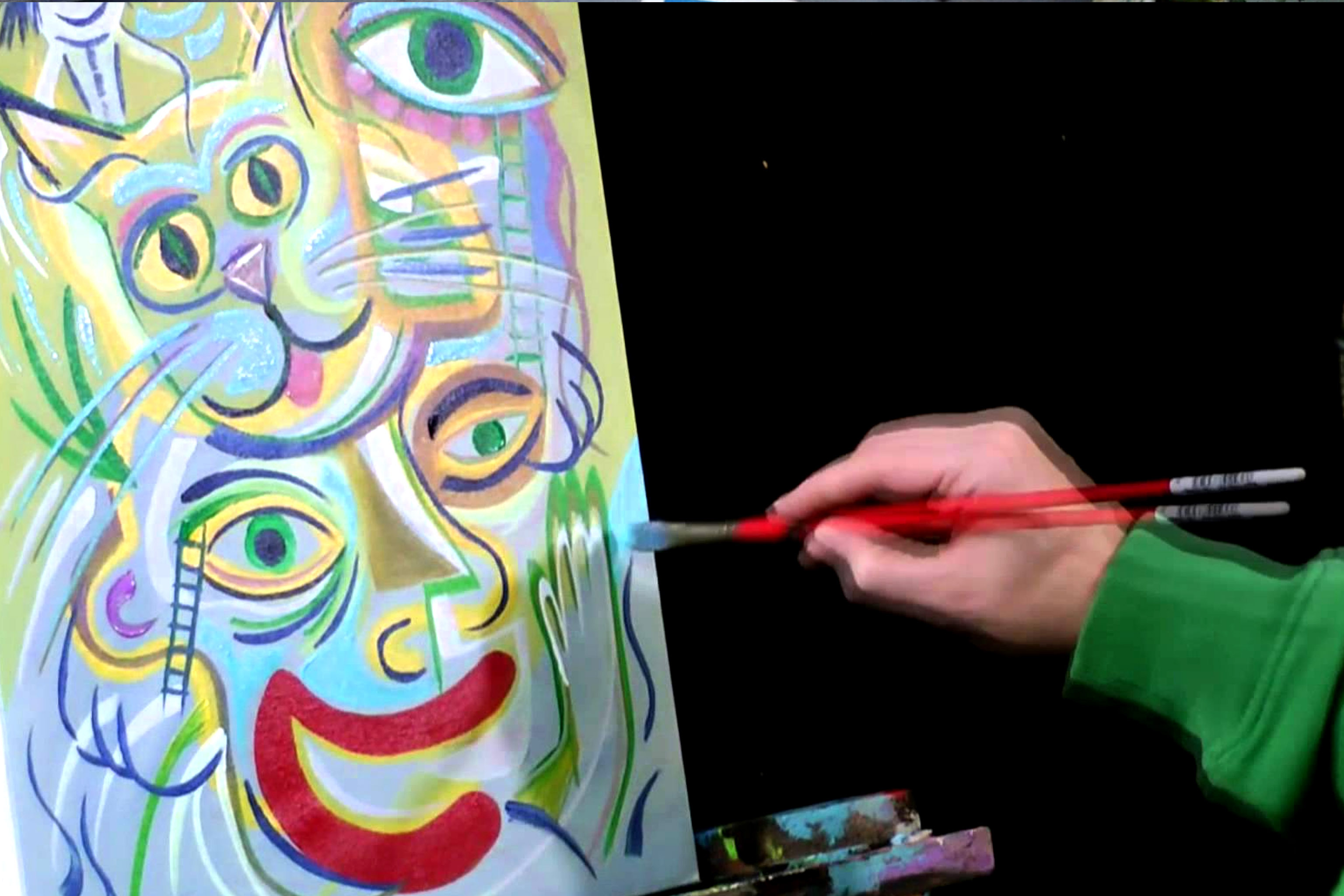Paint with acrylics
Paint a colorful beginner acrylic landscape using brushes, palette, and simple techniques. Practice color mixing, layering, and cleaning brushes safely.



Step-by-step guide to paint with acrylics
Learn How to Paint "KIDS ON A BEACH" with Acrylic Paint - Paint and Sip at Home - Step by Step Video
Step 1
Set up your workspace by placing all materials within reach on a flat table.
Step 2
Put on your old shirt or apron to protect your clothes.
Step 3
Lightly sketch a horizontal line for the horizon and a few simple hill shapes with your pencil.
Step 4
Squeeze small blobs of blue yellow red and white onto your palette.
Step 5
Mix a light sky color by blending blue with white on the palette until it looks soft.
Step 6
Paint the top two-thirds of your canvas with the sky color using horizontal strokes.
Step 7
Rinse your brush in the water cup until most paint rinses out.
Step 8
Blot your brush on a paper towel until it is mostly dry.
Step 9
Mix a light green by blending blue and yellow and add a little white if you want it lighter.
Step 10
Paint the distant hills with the light green using gentle rounded strokes.
Step 11
Mix a darker green by adding more blue or a tiny touch of red to your green on the palette.
Step 12
Paint the foreground with the darker green and add simple details like a tree or path using a smaller brush.
Step 13
Wash all brushes thoroughly in clean water and then blot them on a paper towel and lay them flat to dry.
Step 14
Share a photo of your finished colorful landscape on DIY.org.
Final steps
You're almost there! Complete all the steps, bring your creation to life, post it, and conquer the challenge!


Help!?
I don't have a canvas or acrylic paints — what can I use instead?
If you don't have acrylics or a canvas, use tempera or poster paints on heavy watercolor paper or sturdy cardboard and follow the same mixing and painting steps (squeeze blobs on a paper plate palette, mix sky and greens, paint top two-thirds, etc.).
My greens keep turning muddy or my brush leaves drips — how do I fix that?
Avoid muddy greens by testing mixes on scrap paper, add only tiny amounts of red when making darker green, rinse your brush in the water cup and blot it on a paper towel until mostly dry before painting foreground details to prevent drips.
How can I change the activity for different ages?
For younger kids (3–5), skip the light pencil horizon, use thicker tempera and large brushes or fingers to paint simple sky and hills, while older kids (8+) keep the pencil sketch, mix subtle sky gradients, and use a small brush to add the tree or path details from the instructions.
How can we make the finished painting more special or longer lasting?
Add texture by scraping wet darker green with a palette knife or pressing torn magazine pieces into the foreground paint, add highlights to the tree with the small brush, let everything dry, then photograph the finished colorful landscape and share it on DIY.org as suggested.
Watch videos on how to paint with acrylics
BEACH WALK-Learn How to Draw and Paint with Acrylics-Easy Beginner Acrylic Painting Tutorial
Facts about acrylic painting for kids
🎨 Acrylic paint was developed in the 20th century and dries much faster than oil paint — great for quick layers!
🧼 Acrylics are water-based — clean brushes with water and a little mild soap before the paint dries to keep bristles safe.
🌫️ Artists use atmospheric perspective: things farther away look lighter and bluer, which makes landscapes feel deep.
🌈 By mixing the three primary colors (red, blue, yellow) plus white, you can create most landscape shades.
🖌️ Different brushes make different marks: flat for skies, round for details, and filbert for soft edges.
How do I paint a colorful beginner acrylic landscape?
What materials do I need for a beginner acrylic landscape?
What ages is painting a beginner acrylic landscape suitable for?
What are the benefits and safety tips for kids painting with acrylics?


One subscription, many ways to play and learn.
Only $6.99 after trial. No credit card required



